Knowde Enhanced TDS
Identification & Functionality
- Carrier
- INCI Name
- Ingredient Origin
- Cosmetic Ingredients Functions
- Technologies
- Product Families
Features & Benefits
- Benefit Claims
- Labeling Claims
- Hair Properties
Proteins, Lipids and Minerals
Hair is an extremely complex and sophisticated composite, where different proteins are combined with lipids and minerals to form a unique structure with extraordinary properties. Hair macrostructure consists of an outer cuticle, an inner cuticle, an inner cortex and occasionally a central medulla.
The cortex is the thickest hair layer, and is made of long cells joined together by an intercellular cement made of proteins and lipids. Each cortical cell is filled with bundles of keratin fibers, or Keratin Intermediate Filaments (KIFs).
Recent findings based on highly sensitive proteomic analytical tools show that human KIFs are composed by acid (type I) and neutral (type II) keratins, organized in bundles: each keratin forms structures in form of a spiral α-helix twisted in pairs that form larger structures called PROTOFIBRILS.
Those, in turn, are organized in groups of four PROTOFIBRILS, forming structures further reinforced, known as FIBRILS. The empty spaces of these complex structures are filled with proteins, known generically as Keratin Associated Proteins, or KAPs.
Hair Fiber
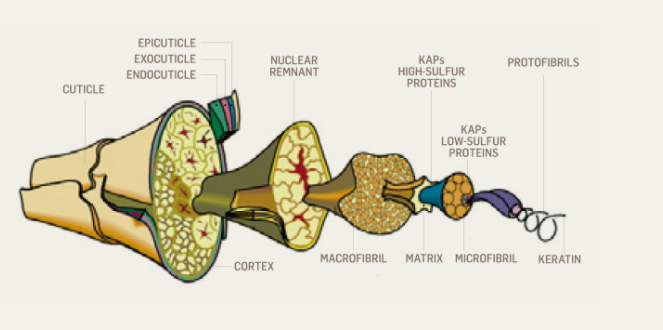
- Benefits
- Hair Density, Hair Protection, Repair, Restructuring, Split Ends
Applications & Uses
- Markets
- Application Format
- Hair Care Applications
- Use Level
- 1.0 - 3.0%
- Usage Guidelines
Product % Shampoo 1.0 to 3.0% Conditioner 1.0 to 3.0% Leave - in 1.0 to 3.0% Hair Mask 1.0 to 3.0% Hair Serum 1.0 to 3.0%
Properties
- Amino Acids Profile
| Value | Units | Test Method / Conditions | |
| Arginine Content | 6.61 | % | — |
| Aspartic Acid Content | 9.93 | % | — |
| Cystine Content | 1.64 | % | — |
| Glutamic Acid Content | 13.65 | % | — |
| Glycine Content | 23.14 | % | — |
| Hystidine Content | 2.46 | % | — |
| Isoleucine Content | 4.22 | % | — |
| Leucine Content | 7.27 | % | — |
| Lysine Content | 4.77 | % | — |
| Methionine Content | 1.49 | % | — |
| Phenilalanine Content | 4.63 | % | — |
| Proline Content | 3.88 | % | — |
| Serine Content | 4.45 | % | — |
| Threonine Content | 3.7 | % | — |
| Tryptophan Content | 0.28 | % | — |
| Tyrosine Content | 2.79 | % | — |
| Valine Content | 5.05 | % | — |
Regulatory & Compliance
- Certifications & Compliance
Technical Details & Test Data
- Prevention of Split Ends
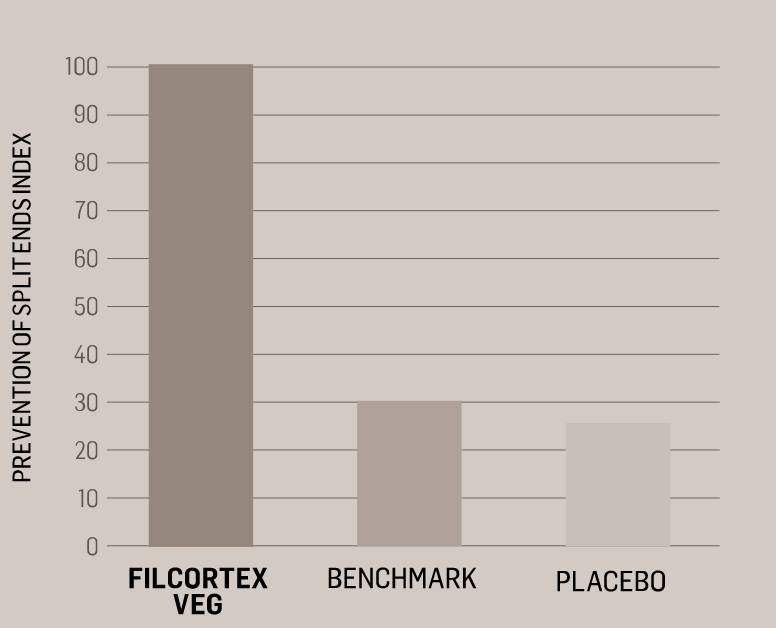
- Filcortex VEG is 3.3 times better in the prevention of the appearance of split ends than a benchmark leave-on product with silicone.
- Filcortex VEG is 4 times better in the prevention of the appearance of split ends than a placebo formula.
KAPS
KAPs comprises more than 100 different proteins and can be organized into 3 majors groups that have different influences on the mechanical properties of hair.
Two groups, generally called High Sulfur KAPs, present large amounts of sulfur containing amino acids, and form crosslinks with keratin fibrils, being the main responsible for the structural strength of the hair fibers. A third group is composed of Low Sulfur KAPs and is known as the HGT group. Kaps of this group do not form crosslinks with the fibrils, and acts as a filling material between macrofibrils, adding flexibility and resistance to fibers.
Since they are not chemically bound to macrofibrils, the KAPs of the HGT group are less resistant than the High Sulfur KAPs and therefore are the first proteins to be damaged and removed by chemical or physical treatments of the fibers, causing a decrease in the cohesion between the proteins of the matrix, leading to the fragility of the hair fibers.
- Proof
Tresses submitted to one treatment cycle TRAT (shampoo+conditioner+mask) showed significantly lower cortical fluorescence intensity (1.9 times) in relation to strands in CTRL treatment. When a product with high substantivity is applied to hair, there is a connection between the active ingredients and damaged hair sites and thus the number of sites available for binding to the marker dye is reduced. Consequently, the fluorescence intensity is lower.
Effects on the Cortex
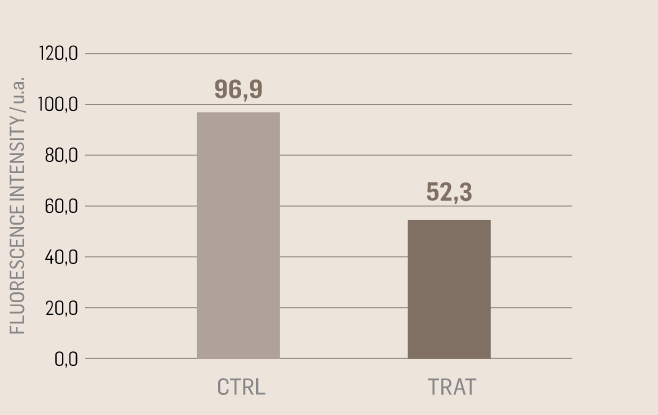
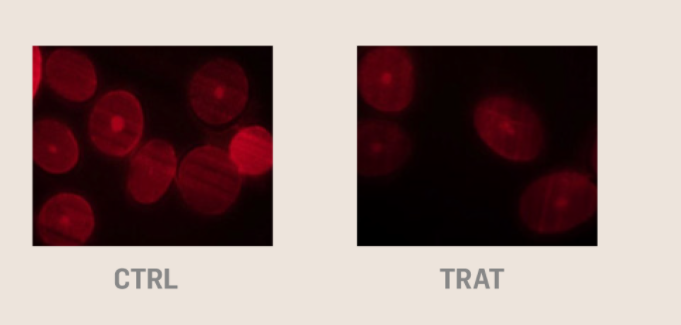
Effects on the Surface (Cuticle Layer)
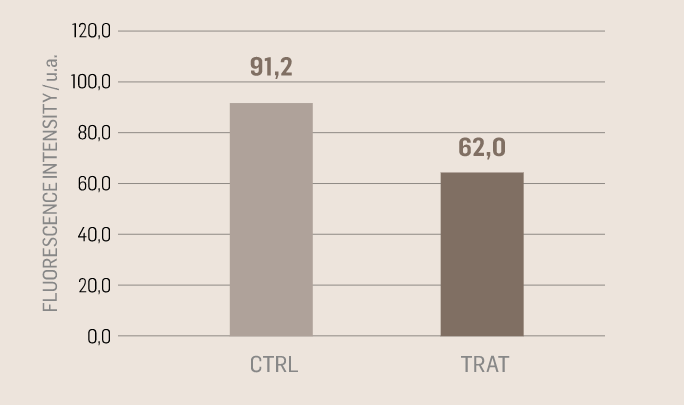
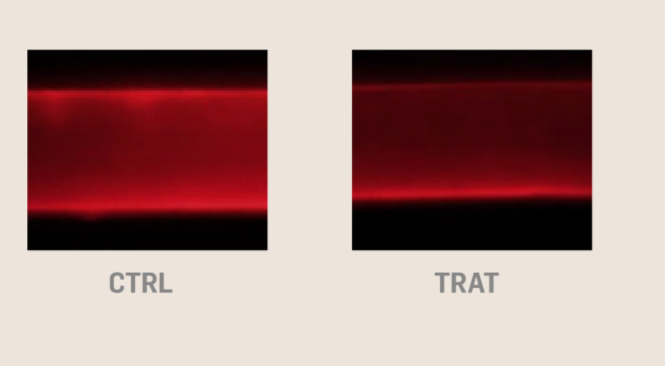
- Thermal Protection of The Hair Fiber
The enthalpy necessary for the denatura- tion of α-keratin in hair treated with the products containing Filcortex increased by 62% after the first cycle. The treatment with Shampoo/Conditioner/Treatment cream/DD Cream with Filcortex, followed by drying and aligning (flat iron) was effective in protecting hair from heat damage.
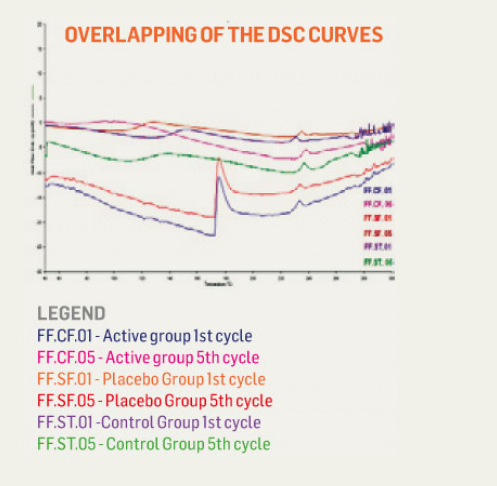 The background noise observed at the end of the thermograms indicates the degradation of hair keratin.
The background noise observed at the end of the thermograms indicates the degradation of hair keratin.

